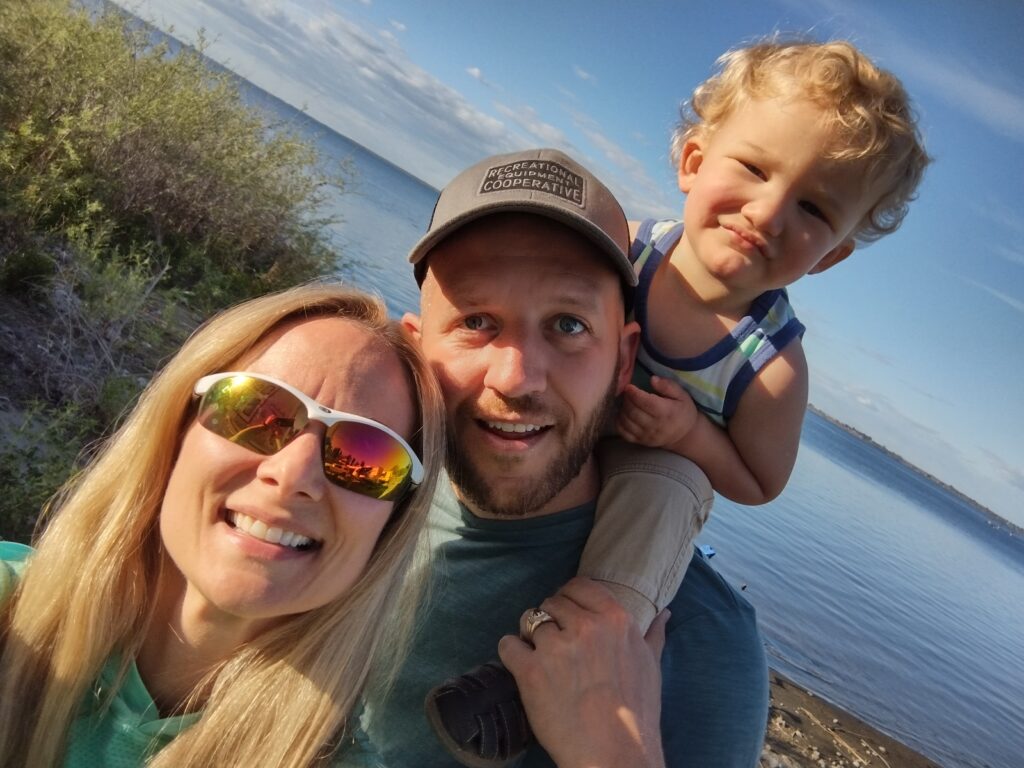New AAP Guidance: Exome and genome sequencing recommended as first-line tests. Learn more
One heroic family wouldn’t take no for an answer. Going full mama bear—and grandmama bear—finally led to answers.
February 12, 2025 • 6 min read

When he was a baby, Bodhi loved to cuddle. Yet he didn’t advance beyond the cuddling stage as quickly as most babies and, when he was less than a year old, he started showing developmental delays. His mother, May, recognized them right away. As a mental health practitioner by trade, she could tell that something was off. “He wasn’t sitting up, rolling over, or doing much babbling,” she says. Bodhi also had regular sensory meltdowns and seemed especially sensitive to light, sounds and smell.
The first step for May and her husband Gene was to find a new pediatrician who was willing to work with them to identify the best support for Bodhi. That included attending a developmental preschool offering physical therapy, occupational therapy, and speech therapy.
While that seemed to help Bodhi, May and Gene wanted answers. What was the cause of Bodhi’s symptoms? Was there more they could do to help him?
May and Gene connected with a pediatric neurologist, who ordered testing for fragile X syndrome. That testing, which only looks for changes in a single gene, came back negative.
Bodhi’s pediatric neurologist was surprised by the results and recommended a slightly more comprehensive test. This test revealed some genetic changes; yet they didn’t explain Bodhi’s symptoms.
“It was suggested that we stop there. But we wanted answers—and I’m so glad that we didn’t listen to that advice,” May says.
Deep down, May was sure that the cause of Bodhi’s symptoms was genetic. She and Gene decided to follow up with a geneticist, who recommended an exome trio test. (A trio test looks at the genetics of the child plus both their parents, to better tell what genetic changes might be causing the symptoms.)
Yet even then it wasn’t smooth sailing to get Bodhi’s exome test ordered. Their insurance company required the family to fax in the referral form, something they did right away. “But the company said they didn’t get it. So we faxed it again. Once again, they said they didn’t get it. No matter how many times we faxed it, the company claimed they didn’t get it.”
May spent hours on the phone trying to understand what was going on. “It was bewildering. It’d already taken us so long to get to this point and now it felt like we hit a wall.”

May tried a new tactic. She faxed, shipped (using signature confirmation) and even had her mother-in-law travel to the insurance company’s headquarters to drop off a hardcopy referral in person and have them initial it received. That finally did the trick, and Bodhi’s exome test was approved.
The exome test revealed Bodhi has X-linked intellectual disability, Cabezas type, an ultra-rare disease that affects a person’s development and growth. It’s caused by changes in the CUL4B gene.
“It felt validating,” May says. “Although we understood there was an uncharted road before us, we finally had a name, a diagnosis and a way to conceptualize our experience with our son.”

May continues, “It was literally one of the most relieving experiences of my life. I wanted to know if it was going to get worse and worse for Bodhi. It was a big relief to learn his condition wasn’t degenerative. The diagnosis did so much for us.”
Not only did the diagnosis help May and Gene adjust their expectations and prepare for the future, but it also legitimized the way doctors and school administrators viewed Bodhi. With a genetic diagnosis, May felt like doctors seemed to trust her descriptions of Bodhi’s symptoms more. Bodhi was able to get an IEP and additional educational resources at school. The family received disability status from the state, which paid for respite care and even an augmentative and alternative communication device for Bodhi.
At the time of Bodhi’s diagnosis, just 126 other children in the world had been diagnosed with X-linked intellectual disability, Cabezas type. Through Facebook, May was able to connect with some of these families and found a supportive community.
And as exome testing becomes more and more available, the numbers are increasing. In the past two years, 15 more children have been diagnosed with the condition.

“Today, Bodhi is just his own little guy. He is still super sweet and funny with lots of energy. He is obsessed with Monster Jam. Both Bodhi and his dad have these really big laughs and a great sense of humor.”
May’s advice to parents going through the same thing: “Trust yourself. All the hoops you have to jump through are hugely time consuming. But exome testing can make all the difference—and you shouldn’t have to wait years for it. So don’t stop asking.”
The first step to getting a comprehensive genetic test like exome is to talk with your child’s doctors. For families that have trouble accessing testing, GeneDx offers a telehealth pathway that connects parents directly with genetic experts who can discuss your child’s symptoms via a telehealth appointment and, if appropriate, order exome testing. Learn more.
Medical society guidelines recommend exome testing for children with:
Note: the names in this story have been changed to protect patient privacy.